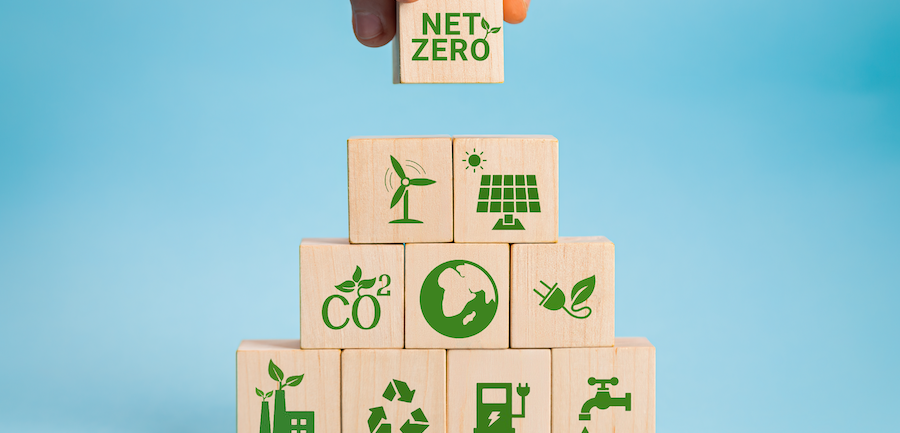
The UK government wants the country to reach zero carbon emissions within the next thirty years. But how? Let’s find out more.
The UK government has set a target of 2050 to get to net zero carbon emissions. It’s the world’s most ambitious net zero target, and the UK was the first country in the developed world to set such a goal. This year has seen instability in the government and a recession on the horizon. Nevertheless, the net zero target remains in place.
But words are one thing; actions are another. What is the UK actually going to do to hit this ambitious target? In this article, we’ll look at some of the available steps we can take. Let’s go.
What is net zero?
But first, let’s clarify exactly what the government is aiming for here.
Net zero is when you achieve a balance between the amount of carbon you emit into the atmosphere and the amount you take out of it.
The UK government set 2050 as a target to hit net zero because if we can achieve it – and the rest of the world gets close to it – we are more likely to avoid seeing a 1.5-degree rise in the world’s temperature by 2100. Such a temperature rise would be disastrous for the planet. 2050 is the earliest date scientists believe the country could fully make this transition.
In reality, achieving net zero in the UK means we would have to reduce our carbon emissions by 100% compared to emission levels in the 1990s. Experts believe it is possible, but it will require massive investment and significant effort from all stakeholders.
Now, let’s look at ways we can limit carbon emissions to hit net zero by 2050.
Travel
The way we travel is one of the country’s most significant causes of carbon emissions. It’s no surprise that it’s one of the first things targeted by the government as a way to lower carbon output.
From 2030, you will no longer be able to buy new petrol or diesel cars in the UK. Instead, the only types of new vehicles you’ll be able to buy will be electric or other non-emission types, such as hydrogen. To support this move, the government and the automotive industry are investing significant amounts in electric vehicle infrastructure, including public charging points.
The UK is a centre of global business and tourism, but aeroplanes are substantial carbon emitters. As a result, the UK aims to lead the way on sustainable aviation fuel (SAF), which produces more than 70% less carbon than standard jet fuel. In addition, it’s made from ingredients including household waste and captured carbon, so it could help redress the balance on both sides.
Home heating
Heating the home is the biggest cause of carbon emissions in the UK, even more than transport and electricity production. So, the government is taking steps to help citizens move from home heating methods that produce too much carbon. If you want to upgrade your old boiler to a newer, clearer model, you can apply for a government grant to help you.
Also, in October 2021, the UK government announced a three-year, £450 million scheme to give 90,000 homeowners £5,000 grants to pay for the installation of heat pumps in their homes. Heat pumps draw hot air directly from the ground and deliver it directly into the house.
Renewables
Next, the government wants to move the country away from fossil fuels for power production and towards renewables such as wind and solar power. Other options include non-renewable but low-carbon power production like nuclear and hydrogen. It does this by encouraging investment in renewable energy from private firms and making it easier for energy companies to build facilities such as wind farms.
This initiative is working quite well, with power consumption from renewable sources regularly surpassing fossil fuels. Of course, the standard issues with the reliability of renewables still exist, but the industry is working hard to solve them.
New tech
It’s possible that some of the ideas that will get the UK to net zero don’t even exist yet. So, the government is investing in innovation to try and develop new green technologies, including £1.5 billion of funding for net zero research.
What else?
Of course, that’s not all. We can always do more. Other initiatives include:
- Agriculture – Farming is a significant source of carbon emissions, so the industry is examining ways to cut carbon output, including encouraging consumers to eat fewer meat and dairy products
- Trees – The government has a yearly target to plant trees across 500 square kilometres of the UK. Of course, trees absorb carbon, so they can help achieve net zero by capturing what’s left of the emissions
- Insulation – If our homes are better insulated, they require less heating. Consumers can apply for insulation grants to help lower energy consumption
Will we get there?
Whether the UK can achieve its ambitious target of net zero by 2050 is another discussion, but you have to commend its effort. Doing nothing is not an option anymore.
It’s clear that there will be many obstacles that need to be overcome on the journey to net zero. There will be financial issues (especially with the oncoming recession) and a lack of buy-in from certain sections of society. But if we can get there, life will be better for everyone.
